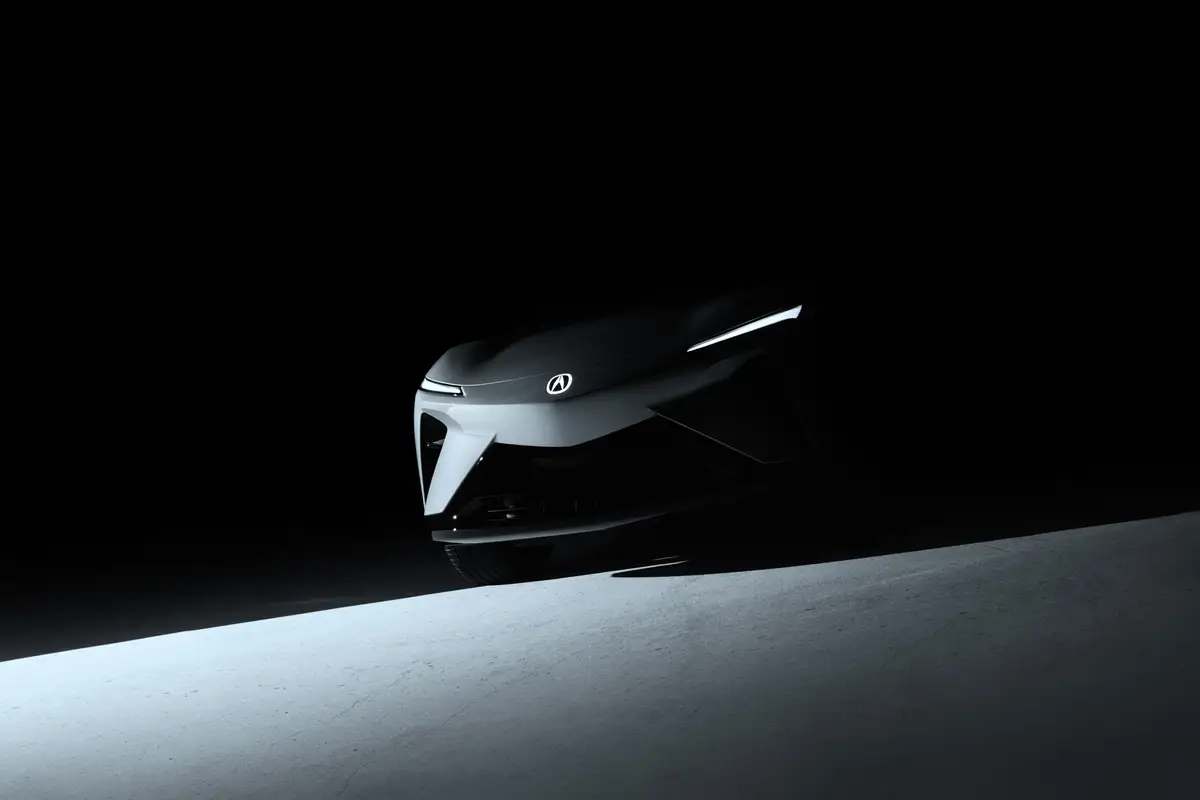Our view: 2008 Suzuki Grand Vitara

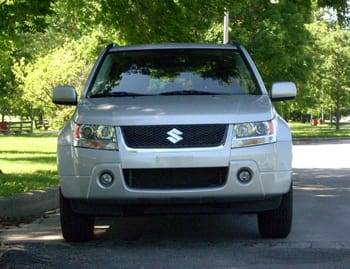
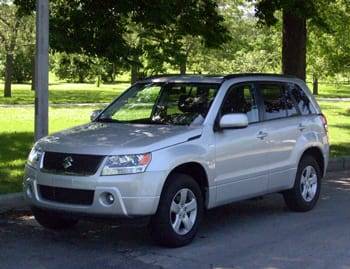
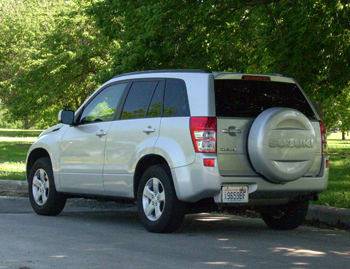

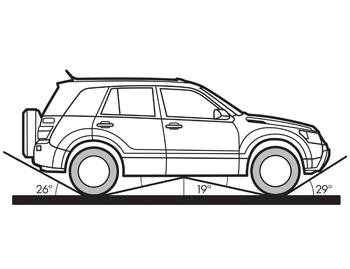





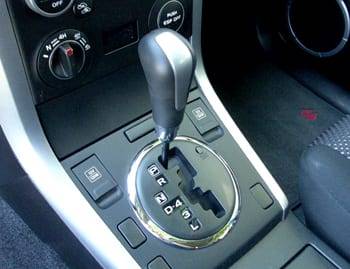
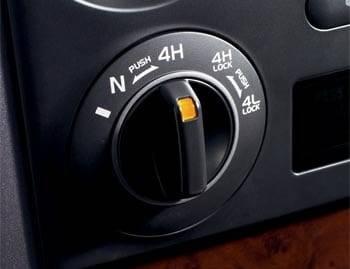
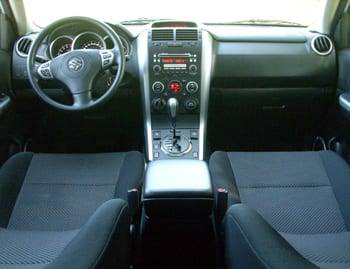
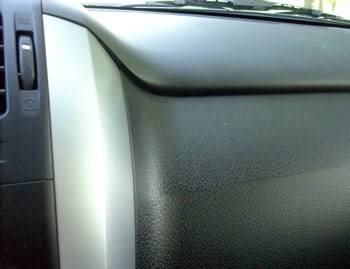
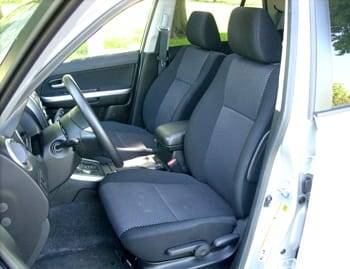

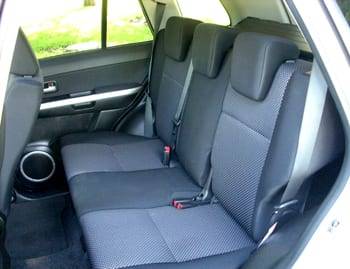
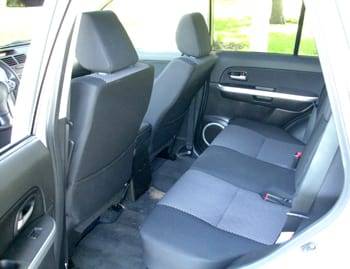
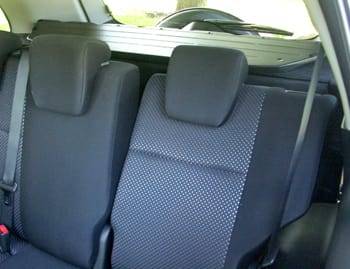
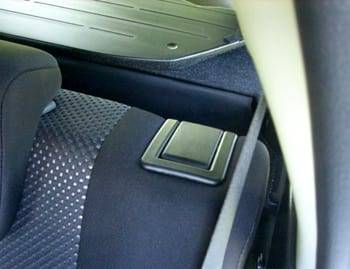
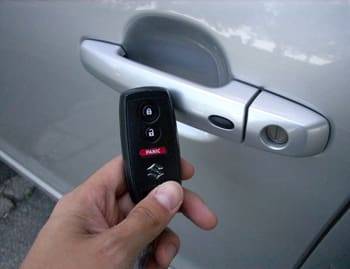
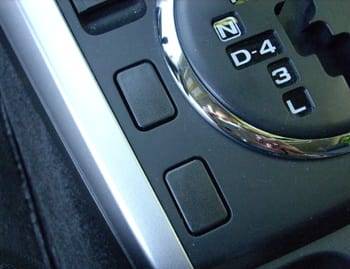

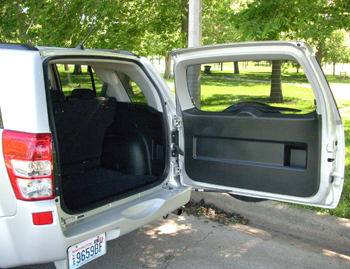
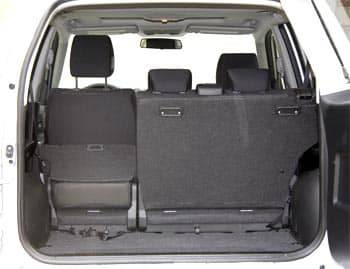
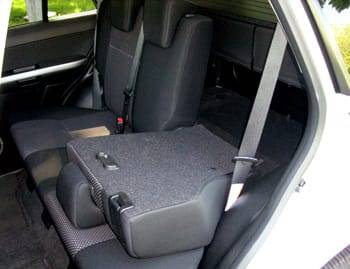
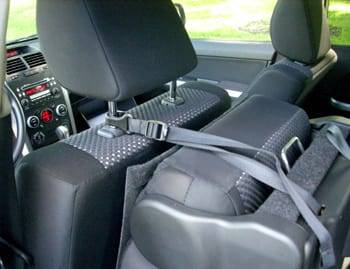
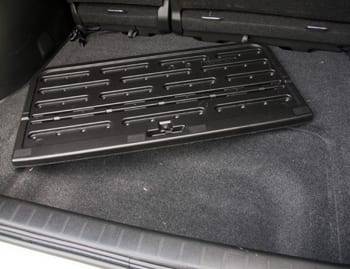

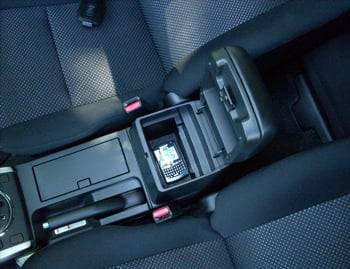
































The Suzuki Grand Vitara’s current generation made its debut for the 2006 model year, and we weren’t impressed overall. Now, with the class of compact SUVs and wagons continuing to evolve and gas prices so high they can barely be seen with the naked eye, I’ve taken another look at the Grand Vitara and can barely see how it would appeal to any buyer.
The Grand Vitara is designed as an off-roader. Suzuki points out that it uses unibody construction, like a car-based SUV body-type, but it also rests on a heavy-duty ladder frame like a pickup truck or “truck-based” body-on-frame SUV. Compared to the average car-based SUV, the main advantages are usually a higher towing capacity and offroad ability. Well, the Grand Vitara’s towing limit is 3,000 pounds, which is 500 pounds shy of the car-based Ford Escape equipped with an optional V-6. As for off-roading, there was precious little of that going on in the SUV’s heyday, and now people are less likely than ever to make the sacrifice and haul around the extra weight of a truck platform, dual-range transfer case and other associated heavy-duty hardware. Weight hurts efficiency, and the Grand Vitara definitely pays a penalty, with EPA-estimated mileage ratings of 18 or 19 mpg in mixed city/highway driving, depending on the transmission. Top competitors offer four-cylinders with mileage in the 20s, and even the loaded Escape V6 is better than the Grand Vitara by 1 city mpg (revised 2009 Escapes, which will go on sale soon, are expected to improve by another mile per gallon). When equipped with four- or all-wheel drive, practically all compact SUVs can handle more low-traction and off-pavement situations than they’ll ever be subjected to, and the Jeep Patriot equipped with the Freedom Drive II Off-Road option steps it up to even higher capability and still delivers a promised rating of 20/22 mpg.
| Compact SUV Gas Mileage | |||||||||||||||||||||||||||||
|---|---|---|---|---|---|---|---|---|---|---|---|---|---|---|---|---|---|---|---|---|---|---|---|---|---|---|---|---|---|
| Most efficient versions with 4WD and automatic transmissions | |||||||||||||||||||||||||||||
| Base Engine | City mpg | Highway mpg | Combined mpg | ||||||||||||||||||||||||||
| Ford Escape | 2.3-liter 4-cyl. | 19 | 24 | 21 | |||||||||||||||||||||||||
| Honda CR-V | 2.4-liter 4-cyl. | 20 | 26 | 22 | |||||||||||||||||||||||||
| Jeep Patriot* | 2.4-liter 4-cyl. | 21 | 24 | 22 | |||||||||||||||||||||||||
| Jeep Wrangler | 3.8-liter V-6 | 15 | 19 | 17 | |||||||||||||||||||||||||
| Suzuki Grand Vitara | 2.7-liter V-6 | 17 | 21 | 19 | |||||||||||||||||||||||||
| Toyota RAV4 | 2.4-liter 4-cyl. | 20 | 25 | 22 | |||||||||||||||||||||||||
| *Without Freedom Drive II Off-Road option; package reduces mpg to 20/22/21. Source: EPA |
|||||||||||||||||||||||||||||
So in exchange for the Suzuki Grand Vitara’s low fuel economy you get so-so towing capacity and capability for the kind of off-roading practically no one does. That’s already a tough equation to overcome, and in looking for other reasons to own a Grand Vitara, I mostly found annoyances.
Exterior & Styling
One good thing I can say about the Suzuki Grand Vitara is that it’s relatively distinctive looking. It has some similarities to earlier-generation Saturn Vues, and whether you like it or not is for you to determine, but standing out in today’s market is uncommon. Suzuki’s play on the ubiquitous fender vent is an element notched into the trailing edge of the hood where it wraps over the fender. The Grand Vitara is one of the few remaining SUVs that carries its spare tire on the outside below the rear window. This keeps the tire from robbing interior space without taking up residence in the undercarriage, which diminishes the car’s departure angle. But I’ll get to that aspect in a moment.
The Inside
There are aspects of the interior that I like, including the overall design. The materials in my test Grand Vitara XSport were pretty good quality, which couldn’t be said of Suzukis just five years ago. The windows are also pretty tall, which gives an airy feel. The driver’s seat has a manual height adjustment, and the steering wheel tilts but unfortunately doesn’t telescope. The interior dimensions are competitive if a bit shy in backseat headroom. At 6 feet tall, I fit comfortably back there, with decent legroom. The floor is relatively flat, and the backrests recline, but the only means of adjusting them is a handle atop the backrest — a process that’s not exactly comfortable, even if the result is.
In time I started getting annoyed by little things, like sun visors that don’t extend; when you swing them to the side, there’s an awful lot of unshaded window. I also noticed that the backlighting intensity of displays and gauges isn’t uniform, to an extent that, when dimmed, one display would become illegible before another. The center storage console is relatively small, and there’s no 12-volt accessory outlet inside (though there are two outside). There’s also no auxiliary input to patch an MP3 player into the stereo; once you have this feature, which many new cars do, you never want to be without it. Surrounding the gear selector on my test car were prominent button “blanks,” reminding me that there were available features I didn’t have.
In terms of the rear view, I’ve definitely seen worse, especially in SUVs with tail-mounted spare tires, but this one does block the low view, and the D-pillar is quite wide.
Standard on the XSport and Luxury, the SmartPass keyless-access system allows you to unlock the doors and start the engine without removing the transmitter from your pocket. I’m a fan of this feature, but Suzuki’s has an annoying quirk: After I pushed the button on the rear swing gate, first unlocking and then opening it, the cabin doors remained locked and their exterior buttons no longer worked. The only way to unlock them was to take out the remote and push its unlock button — or to close the cargo door then try again. If this circumstance seems unlikely, imagine that you go to put something in the hatch and your passenger tries to get in the car. It only has to happen once to frustrate, and it happened to me twice in one week.
The current-generation Suzuki Grand Vitara hasn’t been crash tested by the Insurance Institute for Highway Safety. Standard safety features include front and side-impact airbags for the front seats as well as side curtain airbags that protect front and rear occupants in the event of a side impact. Antilock brakes and an electronic stability system are standard — always good to have, especially on an SUV and even more so on an off-roader.
Ride & Handling
The Suzuki Grand Vitara has independent front and rear suspensions, which remains the exception among offroad vehicles, but I didn’t find the ride particularly carlike. The firmness is more like a conventional truck’s, and both I and some of my colleagues rate it on the low end of compact-SUV comfort. My test car had the standard 16-inch wheels and thus taller tire sidewalls, so it’s possible the optional 17-inch wheels and lower-series tires (standard on the Luxury trim level) would be firmer still.
In terms of handling, the Grand Vitara feels reasonably grounded for an off-roader, but it’s not sporty. The suspension allows for some sideways hop when cornering on rough pavement. At 36 feet, the turning diameter is decent, especially compared to the Honda CR-V, which needs almost 2 feet more, even with front-wheel drive. That said, the Grand Vitara’s driveline noticeably binds when you turn with the steering wheel turned all the way. Not to say it’s damaging itself, but it doesn’t feel right.
Going & Stopping
For a V-6 with paltry mileage, the Grand Vitara’s acceleration is merely adequate. Our friends at MotorWeek clocked a comparably equipped 4WD Grand Vitara auto’s 0-60 mph time at 9.0 seconds. Rear-wheel drive or a manual transmission (or both) would make for quicker sprints. Though a four-cylinder has been rumored for the 2009 model year, pokier acceleration is practically guaranteed. A stronger V-6 has also been rumored, but we can’t guess how that would affect mileage; it could well improve despite a power increase.
The antilock brakes have front discs and rear drums. Another disappointment, drum rear brakes are technically inferior and on their way out, though the Escape is another holdout. It’s the result that counts more than the formula, though, and unfortunately MotorWeek cites a 60-0 mph stopping distance of 135 feet, which is a bit long.
Cargo & Towing
As noted, the Suzuki Grand Vitara’s maximum trailer weight is 3,000 pounds — twice that of the CR-V and four-cylinder Escape, but less than the Escape V6, which has car-based construction and better mileage.
The side-opening swing gate is another strike against the Grand Vitara. The design is necessary when you want to carry the spare tire on the back, but it requires a lot of space behind the car to open. Also, it swings toward the curb, so you’re forced to load the cargo hatch from the street rather than the sidewalk. Current generations of the CR-V and Jeep Liberty have replaced their swing gates with liftgates, but the Toyota RAV4 still has the curb-side swing.
| Compact SUV Cargo Volume (cu. ft.) | ||||||||||||||
|---|---|---|---|---|---|---|---|---|---|---|---|---|---|---|
| Behind backseat | Backseat folded | |||||||||||||
| Ford Escape | 29.2 | 66.3 | ||||||||||||
| Honda CR-V | 35.7 | 72.9 | ||||||||||||
| Jeep Patriot | 23.0 | 62.7 | ||||||||||||
| Suzuki Grand Vitara | 24.4 | 68.9 | ||||||||||||
| Toyota RAV4 | 36.4 | 73.0 | ||||||||||||
| Source: manufacturer data | ||||||||||||||
In cargo capacity, the Suzuki Grand Vitara is midpack when the rear seats are folded, but it’s only slightly better than the Patriot behind the backseat and it significantly trails the rest. More of a problem, in my opinion, is the way the folding seats operate. Where most folding seats go into the floor and create a continuous cargo floor, the lowered Grand Vitara backrests are high. By pulling a strap at the seat’s rear, you can tumble the whole seat forward 90 degrees, which helps, but then the seat might bang into the front seatback every time you hit the brakes. There’s an old-school tether meant to secure the tumbled seat, but it attaches to the front seat’s head restraint post. I can’t say I’ve seen that before; usually it ties to a pillar. Even when cinched up tight, the backseat kept tugging on my seat. Again, annoying.
A True Off-Roader?
Even though the spare tire isn’t strapped to the undercarriage, the departure angle isn’t great: 26 degrees. The offroad-capable Jeep Patriot’s measures 32 degrees, and even the Escape — which makes no claim of offroad chops — has a 28 degree departure angle. The Suzuki Grand Vitara’s approach and breakover angles are similarly competitive but not exceptional.
It doesn’t help that the Grand Vitara’s ground clearance is listed as 7.4 inches. A true offroader has to provide better clearance. This is roughly what you get in the CR-V and RAV4; the Escape rides 8.4 inches off the ground and the Patriot starts at 8 inches and grows to 9 inches of clearance with the Freedom Drive II package.
The Grand Vitara’s ostensible advantage over the others — excepting rock-crawling stalwarts like the Wrangler and Liberty — is its dual-range transfer case (the Patriot’s atypical lowest CVT gear ratio is an effective alternative, but it’s not a true separate low gear). The optional driveline is technically a permanent four-wheel-drive system, which means it’s always activated and can’t be switched to a rear-drive mode, even though it’s based on rear-wheel drive. In normal driving, traction is aided by a standard electronic stability system and its four-wheel traction control. A dashboard knob offers 4H (4WD high) and 4H Lock, which locks the center differential. The low range is labeled 4L Lock. There’s also an N (neutral) setting that lets you tow the Grand Vitara four-wheels-down behind, say, a motorhome.
Grand Vitara in the Market
American automakers get a lot of criticism for their bad decisions in the sport utility arena. There was too much emphasis on the truck-based type, and they’re paying the price. Suzuki proves with the Grand Vitara that a Japanese company can make the same miscalculation. The older Vitara and Grand Vitara were always offroad vehicles, but times have changed — and so has the Suzuki Grand Vitara. Where it used to be a tiny model — the smallest off-roader, with its own niche — it’s now as large as the other guys. My thinking is that the people who still want to go off-roading despite high fuel prices will go for one of the best off-roaders, like the Jeep Wrangler or Nissan Xterra. I haven’t driven the Grand Vitara off-road, but even by the numbers it doesn’t measure up. To buy the Suzuki Suzuki Grand Vitara over one of the many other options out there, you’d have to really like the way it looks, and that’s about the only reason I can think of.
| Send Joe an email |

Former Executive Editor Joe Wiesenfelder, a Cars.com launch veteran, led the car evaluation effort. He owns a 1984 Mercedes 300D and a 2002 Mazda Miata SE.
Latest news

If Premium Gas Is Recommended for My Car, Will Using Regular Void the Warranty, Ruin the Engine?

